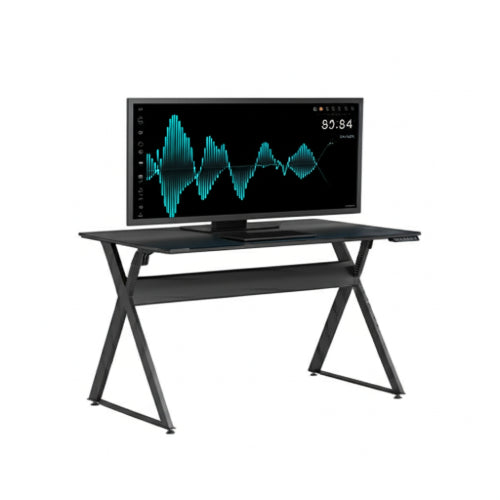The Intelligent Workplace: How Smart Office Furniture is Revolutionizing Modern Workspaces
The modern office is no longer a static landscape of beige cubicles and clunky filing cabinets. Today's workspaces are dynamic, adaptable, and increasingly infused with technology. At the forefront of this evolution is smart office furniture – pieces designed with integrated technology to enhance productivity, well-being, and overall workplace efficiency.
But what exactly is smart office furniture, and why is it playing such a crucial role in shaping the future of work? Let's delve into the intelligent transformation of our workspaces.
Beyond Aesthetics: Defining Smart Office Furniture
Smart office furniture goes beyond mere functionality and aesthetic appeal. It incorporates technology to offer intelligent features and data-driven insights. Think of desks that adjust height automatically, chairs that monitor your posture, and storage solutions that track inventory. These aren't futuristic fantasies; they are tangible solutions being implemented in forward-thinking offices around the globe.
The Multifaceted Benefits of an Intelligent Workspace:
The integration of smart furniture brings a wealth of advantages to both employees and organizations:
- Enhanced Employee Well-being: Ergonomics are paramount in a healthy and productive workspace. Smart desks with sit-stand functionality encourage movement and combat the negative effects of prolonged sitting. Smart chairs can provide real-time feedback on posture, prompting users to adjust for better spinal alignment and reduced discomfort. This focus on physical well-being can lead to fewer sick days and increased job satisfaction.
- Boosted Productivity and Focus: Clutter and disorganization can be significant distractions. Smart storage solutions can help streamline workflows by providing organized spaces and even tracking the availability of supplies. Features like integrated charging ports and docking stations in desks minimize cable clutter and keep devices powered up, allowing employees to focus on their tasks without interruption.
- Optimized Space Utilization: In today's flexible work environments, maximizing space is crucial. Smart furniture can play a role in optimizing layout. For instance, sensors in desks can track occupancy, providing data that helps organizations understand how their space is being used and identify opportunities for more efficient configurations. This data can inform decisions about hot-desking, meeting room allocation, and overall space planning.
- Data-Driven Insights for Management: The data collected by smart office furniture can provide valuable insights for facility managers and organizational leaders. Occupancy sensors can inform energy-saving initiatives by automatically adjusting lighting and HVAC in unoccupied areas. Usage data on meeting rooms can help optimize scheduling and resource allocation. Posture monitoring data (anonymized, of course) can highlight potential ergonomic issues across the workforce.
- Improved Collaboration and Communication: Some smart furniture is designed specifically to facilitate collaboration. Smart meeting tables with integrated AV systems, wireless presentation capabilities, and even interactive whiteboards can streamline meetings and enhance communication among team members, whether they are in the room or joining remotely.
- Creating a Modern and Attractive Workplace: Investing in smart office furniture signals a commitment to employee well-being and innovation. This can contribute to a more modern and attractive workplace culture, making it easier to attract and retain top talent who value technology-driven and employee-centric environments.
Examples of Smart Office Furniture in Action:
- Height-Adjustable Smart Desks: Automatically adjust to pre-set heights or remind users to switch between sitting and standing throughout the day. Some even integrate sensors to detect prolonged sitting and gently prompt movement.
- Smart Ergonomic Chairs: Provide real-time feedback on posture via sensors and connected apps, guiding users towards healthier sitting habits. Some models may even have automatic adjustments for lumbar support and seat depth.
- Smart Storage Solutions: Cabinets and lockers equipped with sensors that track inventory, manage access via keycards or biometrics, and even alert administrators when supplies are running low.
- Smart Meeting Tables: Integrate charging ports, wireless presentation screens, and seamless connectivity for video conferencing, fostering more efficient and collaborative meetings.
- Smart Lighting Systems: While not strictly furniture, integrated smart lighting that adjusts based on occupancy and natural light levels often complements smart office furniture to create an optimal ambient environment.
The Future is Intelligent:
As technology continues to evolve, so too will the capabilities of smart office furniture. We can anticipate even more sophisticated features, seamless integration with other smart building systems, and a greater emphasis on personalization and user experience.
The adoption of smart office furniture is not just a trend; it's a fundamental shift towards creating more human-centric, efficient, and sustainable workspaces. By embracing intelligent design, organizations can empower their employees, optimize their resources, and build a workplace that is truly fit for the future of work.
Are you ready to make your workspace smarter? The revolution has already begun.







